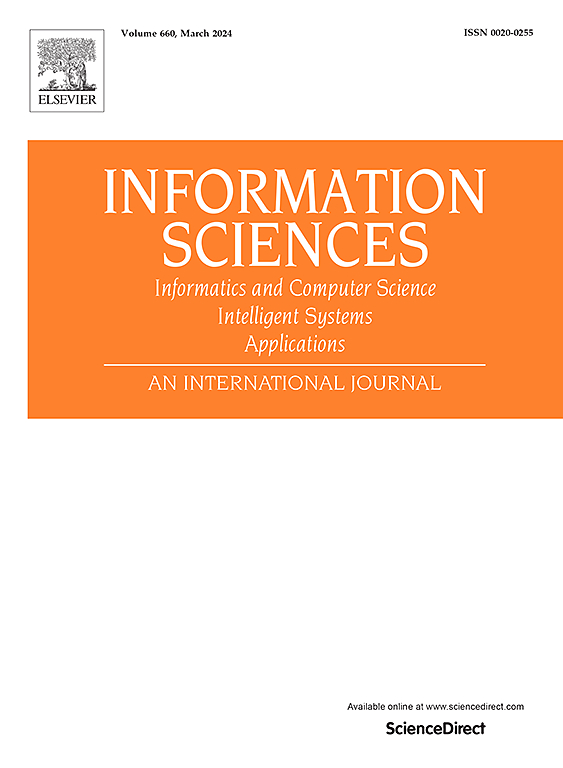通过三头训练和类别自适应清洗的噪声鲁棒标签移位校正框架
IF 6.8
1区 计算机科学
0 COMPUTER SCIENCE, INFORMATION SYSTEMS
引用次数: 0
摘要
当源域和目标域之间的条件分布保持一致,但边缘标签分布不同时,就会发生标签移位。例如,在新冠肺炎疫情爆发初期,医院中肺炎病例与普通感冒病例的比例可能相对较低。在大流行的后期阶段,这一比例可能会发生巨大变化,肺炎病例成为主要病例,尽管每种疾病的症状表现仍然一致。现有的标签转移方法通常旨在调整分类器的输出以匹配目标域的标签分布,假设源域具有干净的标签。然而,现实世界的场景经常涉及源域中的标签噪声。例如,在COVID-19的早期阶段,轻微和易混淆的症状经常导致将COVID-19误诊为普通感冒,从而引入标签噪音。这种噪音影响了传统方法的有效性,需要新的方法。为了解决这个问题,我们使用噪声源数据分析标签移位校正下的分类器误差范围。基于此分析,我们提出了一种抗噪声的标签移位校正(NLSC)框架。NLSC采用三头结构训练(THAT)策略进行鲁棒特征学习,采用类自适应阈值清洗(CATC)策略进行源数据净化。大量的实验证实,我们的方法优于现有的最先进的技术,特别是在具有高源域噪声率的现实场景中。本文章由计算机程序翻译,如有差异,请以英文原文为准。
NLSC: A noise-robust label shift correction framework via three-head training and class-adaptive cleaning
Label shift occurs when the conditional distributions remain consistent between source and target domains, but the marginal label distributions differ. For instance, during the early stage of the COVID-19 outbreak, the proportion of pneumonia cases compared to common cold cases in hospitals may have been relatively low. This ratio could shift dramatically in later stages of the pandemic, with pneumonia cases becoming predominant, even though the symptomatic presentation of each disease remained consistent. Existing label shift methods typically aim to adapt a classifier’s output to match the target domain’s label distribution, assuming the source domain has clean labels. However, real-world scenarios often involve label noise in the source domain. For example, during COVID-19’s early phase, mild and confusable symptoms frequently led to misdiagnoses of COVID-19 as the common cold, introducing label noise. Such noise compromises the effectiveness of traditional methods, necessitating novel approaches. To address this, we analyze classifier error bounds under label shift correction using noisy source data. Based on this analysis, we propose a Noise-robust Label Shift Correction (NLSC) framework. NLSC employs a Three-Head Architecture Training (THAT) strategy for robust feature learning and a Class-Adaptive Threshold Cleaning (CATC) strategy for source data purification. Extensive experiments confirm that our method outperforms existing state-of-the-art techniques, particularly in real-world scenarios with high source domain noise rates.
求助全文
通过发布文献求助,成功后即可免费获取论文全文。
去求助
来源期刊

Information Sciences
工程技术-计算机:信息系统
CiteScore
14.00
自引率
17.30%
发文量
1322
审稿时长
10.4 months
期刊介绍:
Informatics and Computer Science Intelligent Systems Applications is an esteemed international journal that focuses on publishing original and creative research findings in the field of information sciences. We also feature a limited number of timely tutorial and surveying contributions.
Our journal aims to cater to a diverse audience, including researchers, developers, managers, strategic planners, graduate students, and anyone interested in staying up-to-date with cutting-edge research in information science, knowledge engineering, and intelligent systems. While readers are expected to share a common interest in information science, they come from varying backgrounds such as engineering, mathematics, statistics, physics, computer science, cell biology, molecular biology, management science, cognitive science, neurobiology, behavioral sciences, and biochemistry.
 求助内容:
求助内容: 应助结果提醒方式:
应助结果提醒方式:


